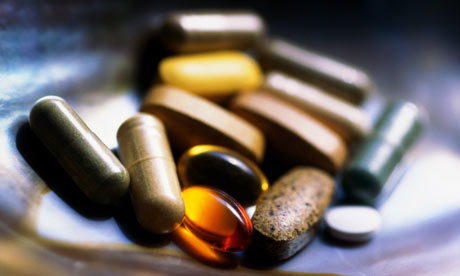Let us consider the artichoke and the very long list of health benefits it offers. But first, there are artichokes and Jerusalem artichokes which are a different plant and not an artichoke at all nor from Jerusalem.
This article is about true artichokes or the Cynar scolymus, member of the thistle family (globe artichoke, etc.). Helianthus tuberosus (Jerusalem artichoke) is a member of the sunflower family and is not a true artichoke at all - it is the tuber that is eaten. Both have cynarin and silymarin, however the true artichoke (cynar scolymus), globe artichoke and varieties have higher levels of both and are the kind used most for liver/gall and more treatment.
The choke (heart) of small artichokes or the Spanish or Italian varieties, can be eaten whole. There are no hairs to remove as is the case with larger varieties.
Since ancient times, the artichoke has been used for liver and gallbladder conditions, 'cleaning' the blood, as well as the bladder. The Egyptians highly prized it as a health and diet food and Plinius described it as the 'food for the rich' because of the health problems contributed to a 'rich' life style - excessive in rich foods, fats and wine that led to liver illnesses (such as cirrhosis), gout and a general run down condition.
Today we know that the artichoke is very high in fibre, potassium, calcium, iron, phosphorus and other trace elements important for a balanced system. It is known to positively help poor liver function (thus helping to lower the blood cholesterol), arteriosclerosis, gout, supports the treatment of hepatitis and improves the gall secretions. It can slightly lower the blood sugar, improve the appetite and digestion, is diuretic and may help some migraine conditions (most especially those caused by toxins in the blood). As it helps the body rid itself of excess water and moves toxins it also has the added side effect of an improved skin luminosity.
In a poor diet of excessive drinking (most especially strong alcoholic drinks), high red meat and fat consumption, the artichoke can boost the liver's ability to regenerate its cells. Obviously, nothing can help advanced cirrhosis of the liver. Most liver problems by the way, are self-inflicted.
The liver's main function is the metabolic transformation of nutrients from the food we eat. It also detoxifies certain poisons. An overstressed liver obviously cannot function properly, which among other things results in poor assimilation of nutrients and increased toxins in the blood. This will eventually adversely affect the entire body causing numerous ailments that are often only symptomatically treated. What is amazing are the numbers of people who abuse their livers and hence their bodies, think they eat well, yet are suffering from a form of malnutrition - a word one associates with poverty and third world countries.
What to do? Take an honest appraisal of your diet, recognize unhealthy habits and develop a better understanding of the importance of a properly functioning liver. After serious drinking and weeks of fat-rich foods, do something good for your liver. Give it a break and help it to recuperate.
When artichokes are in season, go on a short term Artichoke 'Cure' (treatment, diet)! Discover new recipes and eat them as a main meal for several days. Repeat for as long as they are in season, varying the menu with small amounts of meat and other vegetables. Artichokes only have about 25 calories. Eat fish and poultry 3 times a week and cut out red meat for while. Avoid all animal fats during this time, use olive oil instead and avoid all strong alcohol. A few glasses of red wine a day helps the red blood cell production as well, however abstain from even wine for the several days to a week before adding a small glass with your meal. Another positive side to artichokes and improved liver function is that weight loss is easier as the metabolic assimilation of food is more efficient.
Infusion: use the leaves you normally throw away. You will need about 12-15 leaves per half litre (approx. 2 cups) of boiling water. Pour over the chopped leaves and allow to brew for 5 minutes. Strain and drink 2 cups during the day. You may sweeten with honey if you like. However, an easier method is to purchase an excellent extract by the W. Schoenenberger, Salus or A. Vogel companies from the health food shop).
Versatile: once trimmed, the versatile Spanish or Italian artichoke (remember you can eat the whole choke) can be cooked whole, sliced lengthways, halved, quartered or chopped, pre-cooked in a little water or broth and used in rice dishes, potato dishes, salads or as a topping for pizzas. They can be fried, steamed, boiled, stuffed, chopped with other ingredients for a filling for tomatoes, served with sauces. Chop the hearts very fine and they can be used in vinaigrette, mayonnaise, mixed with cooked egg or grated cheese or used in omelettes. Then there's quiche, pasta and risotto dishes - you are only limited by your imagination!
f you’re looking at the relative health values of different green vegetables, you may be interested in all of the stuff that is inside artichokes that helps provide specific benefits for the body. The artichoke is renowned as a curative medicinal plant in some historic cultures for a number of reasons. Scientists today look at how various elements of this plant can promote overall wellness. Here are some of the major health benefits of the artichoke.
1. Antioxidants for Overall Health
Like other green plants, fresh artichokes have a lot of antioxidant value. The class of natural plant nutrients called antioxidants helps to prevent some kinds of cancer, as well as heart disease and other illnesses. Specific kind of antioxidants in the artichoke include quercetin and a flavonoid called rutin, both of which are helpful in fighting off illness.
2. Lower Cholesterol
The cyanic properties in the artichoke help the body to excrete bad cholesterol and assist in balanced cholesterol levels that help those with high cholesterol. That’s another reason that the artichoke can help prevent some kinds of heart disease.
3. Blood Glucose Levels
Scientific evidence shows that the artichoke can help balance blood glucose levels and help deal with diabetes. Foods on this side of the glycemic index are often prescribed for patients dealing with a blood sugar imbalance.
4. Improved Liver Function
The artichoke plant has been known as a liver tonic for centuries. Its natural properties help the body get rid of toxins and assist the liver in its vital operations.
5. Digestive Value
Another health benefit of the artichoke is its role as a digestive aid. Like a variety of other green plants including parsley, the artichoke was often used to soothe the stomach in past cultures. Today, nutritionists sometimes recommend the artichoke as a cure for irritable bowel syndrome, or IBS. One reason that the artichoke helps with digestion, according to some scientists, is that it helps to stimulate the gall bladder.
6. Helping with Hypertension
Artichokes have a good deal of potassium, a mineral that’s generally good for you. Potassium helps deal with excess sodium, and for those who are taking some kinds of anti-hypertensive drugs, foods like artichokes can be a way to hedge against a potential potassium deficiency.
 Soy milk has long been a popular alternative for people who are unable to drink cow's milk (usually due to lactose intolerance). But rather than drink soy milk because you have to, more and more people are deliberately choosing soy milk because of the added health benefits.
Soy milk has long been a popular alternative for people who are unable to drink cow's milk (usually due to lactose intolerance). But rather than drink soy milk because you have to, more and more people are deliberately choosing soy milk because of the added health benefits.














